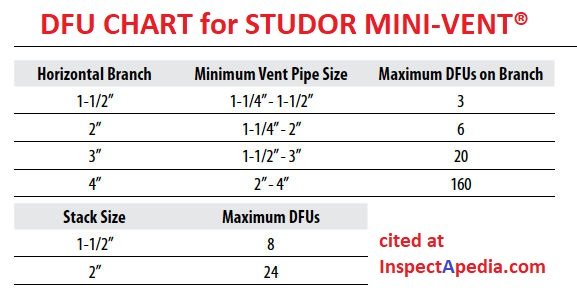DFU in plumbing stands for Drainage Fixture Unit. These units are used to determine the minimum pipe size required for proper drainage in a plumbing system. Understanding DFU is crucial for designing efficient and effective plumbing systems. By calculating the DFU for each fixture, plumbers can ensure adequate drainage capacity. Let’s delve into the significance and calculation of DFU in plumbing to enhance your understanding of this essential aspect of plumbing design.
Discovering the Basics: What is DFU in Plumbing?
Welcome, young plumbers and plumbing enthusiasts! Today, we are diving deep into the world of plumbing to unravel the mystery behind DFU. You might be wondering, “What on earth is DFU?” Well, fear not, as we are here to guide you through this fascinating aspect of plumbing.
Understanding DFU
DFU stands for Drainage Fixture Unit, but what does that really mean? In simple terms, DFU is a unit of measurement used in plumbing to determine the load or amount of waste that different fixtures contribute to the drainage system. Think of it as a way to calculate how much water and waste different plumbing fixtures can handle.
Importance of DFU in Plumbing
Now, you may be wondering why DFU is so important in the world of plumbing. Well, understanding DFU is crucial for designing and installing efficient drainage systems in buildings. By calculating the DFU values of various fixtures, plumbers can ensure that the drainage system can handle the flow of water and waste effectively.
Calculating DFU Values
Calculating DFU values may sound complicated, but it’s actually quite simple. Each plumbing fixture, such as a toilet, sink, or shower, is assigned a specific number of DFUs based on its size and usage. For example, a toilet typically has a higher DFU value than a sink because it generates more waste.
Factors Affecting DFU Values
Several factors can affect the DFU values of plumbing fixtures. The size of the fixture, the type of waste it produces, and the frequency of use all play a role in determining its DFU value. For instance, a commercial kitchen sink may have a higher DFU value than a residential bathroom sink due to the larger volume of waste it handles.
Applications of DFU in Plumbing
DFU values are used in various aspects of plumbing, from designing drainage systems for residential homes to planning plumbing layouts for large commercial buildings. By considering the DFU values of different fixtures, plumbers can ensure that the drainage system is efficient and meets the needs of the building’s occupants.
Benefits of Using DFU
Using DFU in plumbing design offers several benefits. It helps plumbers determine the optimal pipe size, slope, and layout for the drainage system. By accurately calculating DFU values, plumbers can prevent issues such as clogs, backups, and overflow, ensuring a smooth and reliable plumbing system.
Real-World Example
Imagine a scenario where a building has multiple bathrooms, a kitchen, and a laundry room. By calculating the DFU values of each fixture in these areas, plumbers can design a drainage system that can effectively handle the diverse water and waste flow from these fixtures without causing any disruptions.
So there you have it, young plumbing enthusiasts! DFU is a fundamental concept in plumbing that plays a crucial role in designing efficient drainage systems. By understanding DFU and its applications, you are one step closer to becoming a plumbing expert!
Remember, the next time you see those DFU numbers on plumbing blueprints, you’ll know exactly what they mean and why they are essential. Keep exploring the fascinating world of plumbing, and who knows, you might just uncover the next big innovation in the world of drainage systems!
Understanding WSFU and DFU
Frequently Asked Questions
What does DFU stand for in plumbing?
DFU stands for Drainage Fixture Unit. It is a unit of measure used to determine the load on a drainage system created by different types of plumbing fixtures.
How are DFUs calculated for plumbing fixtures?
DFUs are calculated based on the type of fixture and its size. Each fixture type is assigned a specific DFU value based on its drainage characteristics and flow rate.
Why are DFUs important in plumbing design?
DFUs are important in plumbing design as they help in sizing pipes, determining system capacities, and ensuring proper drainage flow. They are used to calculate the total load on a drainage system to ensure it functions efficiently.
Can DFU values vary for different plumbing fixtures?
Yes, DFU values can vary depending on the type and size of the plumbing fixture. Larger fixtures with higher drainage requirements will have a higher DFU value compared to smaller fixtures.
Final Thoughts
In conclusion, DFU in plumbing stands for Drainage Fixture Unit, which is a measure of the wastewater flow from plumbing fixtures. Understanding DFU is crucial for proper sizing of drainage pipes and designing an efficient plumbing system. By knowing what DFU represents, plumbers can ensure that the system can handle the volume of wastewater without any issues. Properly accounting for DFU helps prevent clogs and backups in the plumbing system, ultimately promoting smooth and trouble-free operation. Remember, knowing what DFU is in plumbing is key to successful and effective plumbing design and installation.




